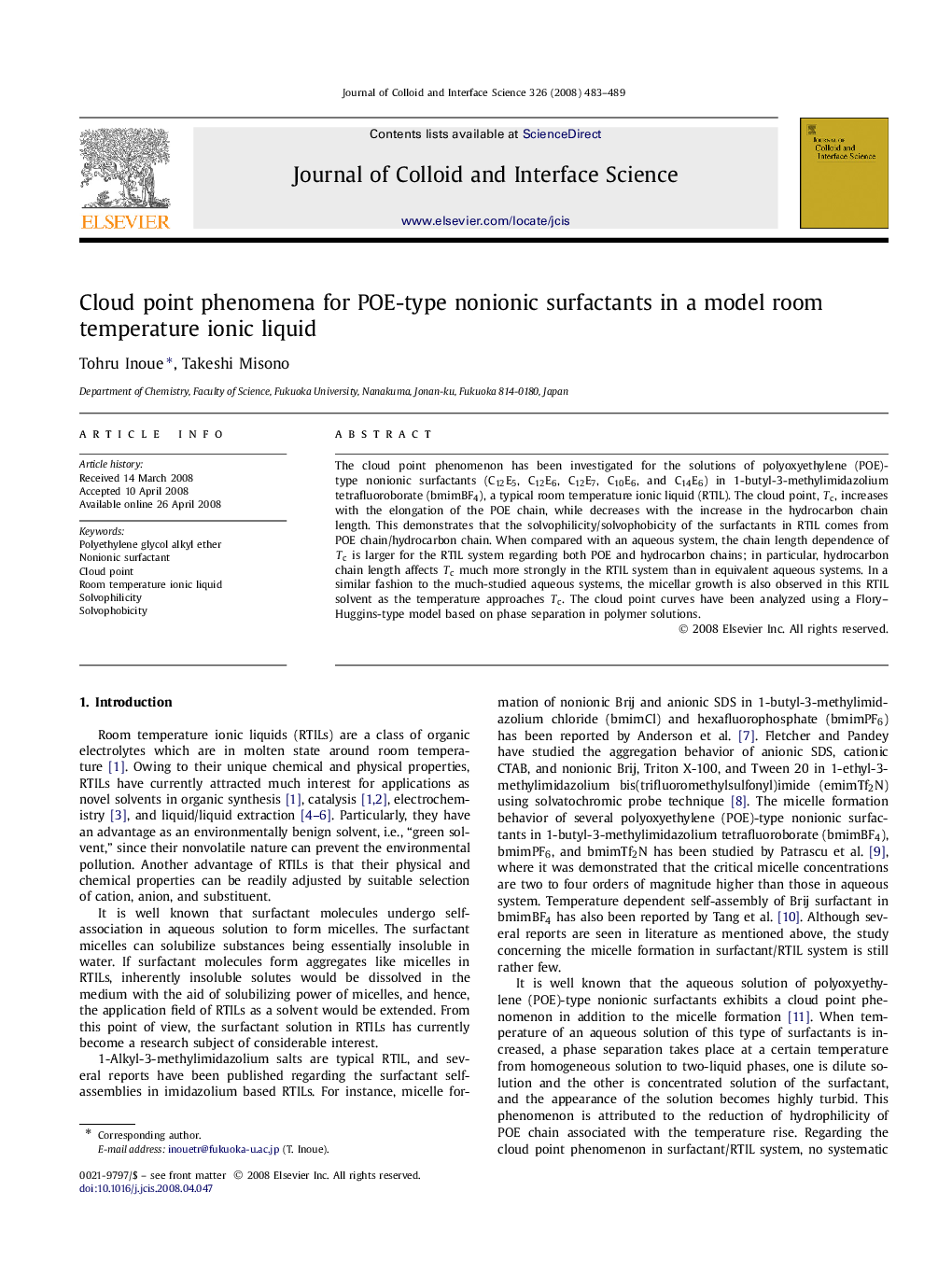| Article ID | Journal | Published Year | Pages | File Type |
|---|---|---|---|---|
| 611344 | Journal of Colloid and Interface Science | 2008 | 7 Pages |
The cloud point phenomenon has been investigated for the solutions of polyoxyethylene (POE)-type nonionic surfactants (C12E5, C12E6, C12E7, C10E6, and C14E6) in 1-butyl-3-methylimidazolium tetrafluoroborate (bmimBF4), a typical room temperature ionic liquid (RTIL). The cloud point, TcTc, increases with the elongation of the POE chain, while decreases with the increase in the hydrocarbon chain length. This demonstrates that the solvophilicity/solvophobicity of the surfactants in RTIL comes from POE chain/hydrocarbon chain. When compared with an aqueous system, the chain length dependence of TcTc is larger for the RTIL system regarding both POE and hydrocarbon chains; in particular, hydrocarbon chain length affects TcTc much more strongly in the RTIL system than in equivalent aqueous systems. In a similar fashion to the much-studied aqueous systems, the micellar growth is also observed in this RTIL solvent as the temperature approaches TcTc. The cloud point curves have been analyzed using a Flory–Huggins-type model based on phase separation in polymer solutions.
Graphical abstractCloud point phenomena have been studied for solutions of POE-type nonionic surfactants (C12E5, C12E6, C12E7, C10E6, and C14E6) in bmimBF4, a typical room temperature ionic liquid (RTIL).Figure optionsDownload full-size imageDownload as PowerPoint slide
